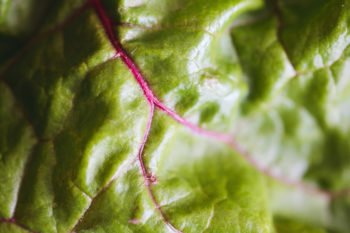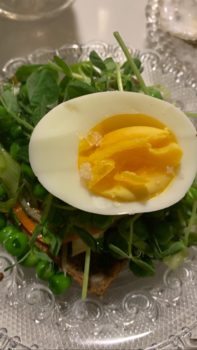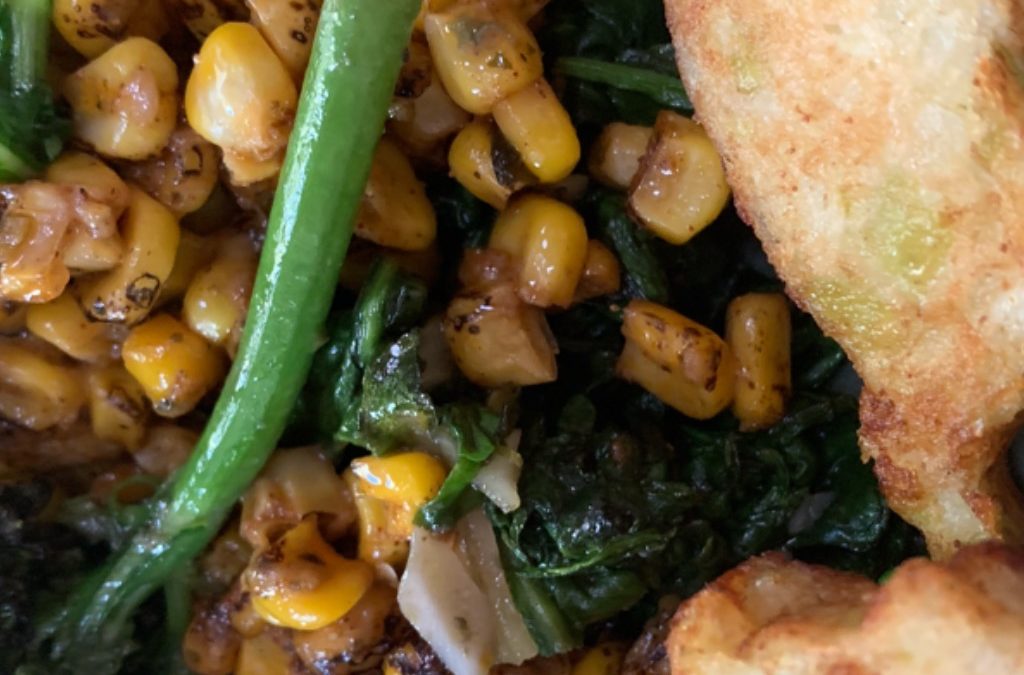Hey Wholist tribe! I’m posting three blogs over the next few weeks all about GUT MICROBIOME, how food affects it, when we should worry about it, food addiction and strategies to mitigate it. So hang tight!

THE GUT BRAIN AXIS
During our formation in utero, our brain and spinal cord are formed from a structure called the neural tube. Some cells located at the dorsal portion of the neural tube are called the neural crest cells. The brain and the spinal cord form what we call the central nervous system. The neural crest cells migrate from their spot in the neural tube to from several structures in our body, one of which is called the enteric nervous system.
The enteric nervous system consists of a large number of neurons (the same types of cells that make up our brain) and glial cells (another type of cell present in our nervous system). These cells are located all along our gastrointestinal tract, and there may be 500 million neurons in the gut, and only 100 billion in your brain, all of which communicate. This system is capable of controlling the functions of our intestinal tract independently from our brain. You may have heard our gut called our "second brain". This is why. Phrases like, “I know this in my gut” or, “I can feel it in my gut” may be more accurate than other old adages!
The enteric nervous system consists of a large number of neurons (the same types of cells that make up our brain) and glial cells (another type of cell present in our nervous system). These cells are located all along our gastrointestinal tract, and there may be 500 million neurons in the gut, and only 100 billion in your brain, all of which communicate. This system is capable of controlling the functions of our intestinal tract independently from our brain. You may have heard our gut called our "second brain". This is why. Phrases like, “I know this in my gut” or, “I can feel it in my gut” may be more accurate than other old adages!
We call this the gut- brain axis or gut-brain connection, basically the communication network that connects your gut and brain. Examples of this connection include
- Vagus nerve connecting your gut and brain can send signals in both directions- we’ve seen studies on the vagal nerve connecting physical and emotional stress to IBS and crohns in a bilateral direction.
- Neurotransmitters like serotonin (happy chemical that also controls body clock) are primarily made in the gut but effects the brain mostly, as is GABA which controls fear and anxiety.
- Gut microbes make short chain fatty acids by digesting fiber and work to control appetite, reduce reward from food, form the blood brain barrier
- Stress and anxiety can reduce the production of bile acids that help you digest dietary fats and even alter their gene transcription

MICROBIOME DESCRIPTION
Microbiome is the term used to describe all the microorganisms that naturally reside in/on our bodies. It relates to fungi, viruses and a large number of bacteria. We have so many “roommates” symbiotically living with us! In fact, the genes in our microbiome outnumber our own genetic material by a factor of 100 to 1. The organisms that live in our bowel are referred to as the intestinal or gut microbiome/flora. There are some that are friendly and helpful and others, not so much. The friendly and unfriendly (also known as pathogenic) bacteria are kept in a steady balance.
However, diet, living conditions, disease and medications can modify these guys. These bacteria live everywhere in our bodies: Skin, mouth and bowel to name a few. Why do our bodies allow for these potentially dangerous organisms to live in our bodies? Since the beginning of time, animals developed and allowed this relationship because it was beneficial to both parties involved. The bacteria that live in our bowel, for example, produce enzymes that allow us to break down and absorb nutrients from food that we would be unable to obtain otherwise. These friendly organisms can also produce chemicals that keep us safe from the potentially bad bacteria.
However, diet, living conditions, disease and medications can modify these guys. These bacteria live everywhere in our bodies: Skin, mouth and bowel to name a few. Why do our bodies allow for these potentially dangerous organisms to live in our bodies? Since the beginning of time, animals developed and allowed this relationship because it was beneficial to both parties involved. The bacteria that live in our bowel, for example, produce enzymes that allow us to break down and absorb nutrients from food that we would be unable to obtain otherwise. These friendly organisms can also produce chemicals that keep us safe from the potentially bad bacteria.
In the gut, the lining of intestines are made up of cells that are closely linked to each other. Linkages between cells have tight junctions that make the space between them sort of absent, forming a tight seal of what stays in your gut and what gets absorbed, or released into the rest of the body. Bacteria, up to 100trill of them, line these spaces. In fact, 99% of unique genes in our body are bacteria (only 1% are human genes) and 95% of those are in our GI tract. Did you catch that I just said we are only 1% human? So basically, the bacteria in our gut is like another living organ in our body, that is fluid and we have the capacity to make it healthy or unhealthy based on how we feed it.
And those of you with LITTLES, the gut flora is set by age 3, so earlier the better to be introducing a diversity of whole fruits and veggies and whole grains, in a diverse alternating and consistent manner, as well as exposures to environmental bacterial diversity.

IMBALANCE OF MICROBIOME
Let’s define Microbial dysbiosis. This is at the root of many of the problems we have with the gut microbiome. We have friendly bacteria and not so friendly bacteria in our microbiome. The good guys keep the bad ones in check and balance. If there is an alteration of the gut bacteria variation and dysfunction or even elimination of the good bacteria in our gut that help us maintain health in a myriad of ways. Theory is that the lifestyle choices we make or experiences we have that can or cannot control (food, stress, sleep, alcohol, tobacco, antibiotics, how you were delivered and what happened in the first few years of your life) that this alters the balance of good/ bad bacteria, that if the variety and content of that bacteria altered to be more inflammatory or more “bad” bacteria than our healthy partner bacteria, you can have alterations in this your health, (research into immune system, neural pathways, skin, cancer, heart disease, vascular disease, sleep, lung disease, fatty liver, type one diabetes, nutrition metabolism, antimicrobial resistance, and obesity are ongoing and coming out every day).
FOODS AND THE IMMUNE SYSTEM
It is important to mention that both our large and small bowel play a vital role in our immune system. Both contain lymphoid tissue; called Peyer’s patches in the small bowel and colon patches in the large bowel. These patches contain T-cells, B-cells and dendritic cells - vital cells for our immune function. Guess who stimulates these immune cells in our bowel? Yep! All those friendly bacteria in our gut! They increase the production of antibodies which helps keep those pathogenic bacteria in check. It also helps our bodies tolerate our friendly bacteria, which in turn, helps our bodies tolerate our own cells. Why is this important? Because, otherwise, we may suffer from autoimmune disorders where our bodies attack our own cells. In doing this, they also keep inflammation at bay. This is one of the reasons why antibiotics, while sometimes necessary, can alter our immune responses for a long time after taking them…. (see my slightly off topic PS at the end of next week's email)
Next week! What foods to choose for a healthy microbiome….

PS Who I am
I am Dr Heather Hammerstedt, I have my doctorate in medicine, board certification in emergency medicine and lifestyle medicine, an integrative nutrition health coaching certificate, a medical acupuncture certificate, a masters in public health, and two tiny crazy muppet humans and a hilarious husband who keep me honest. I’m also the CEO and Founder of Wholist, a lifestyle medicine coaching and consulting company that specializes in helping busy professionals transform their current and future health futures to meet their goals, all with evidence, education, empowerment delivered by flexible technology to meet you where you are to help you succeed.



